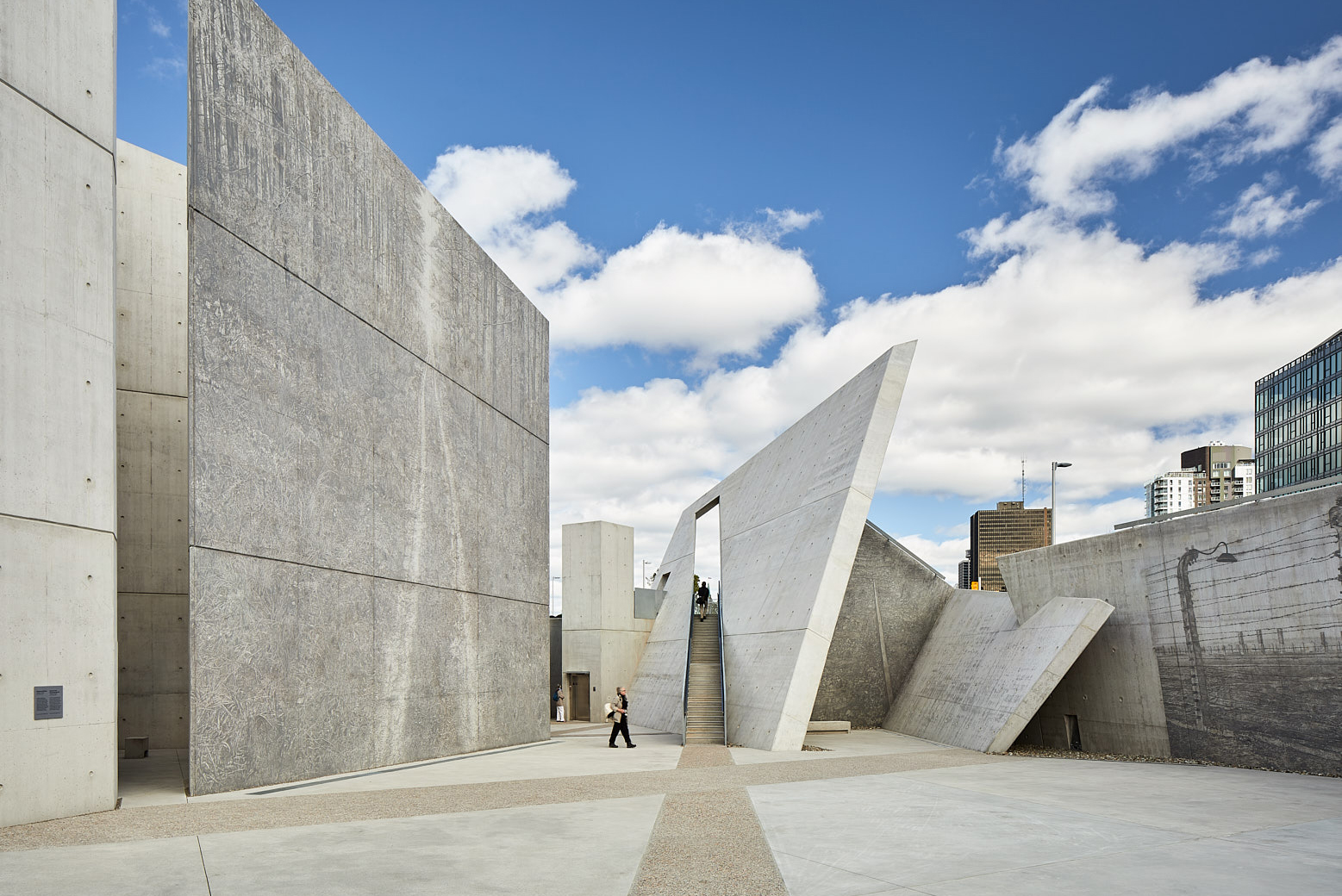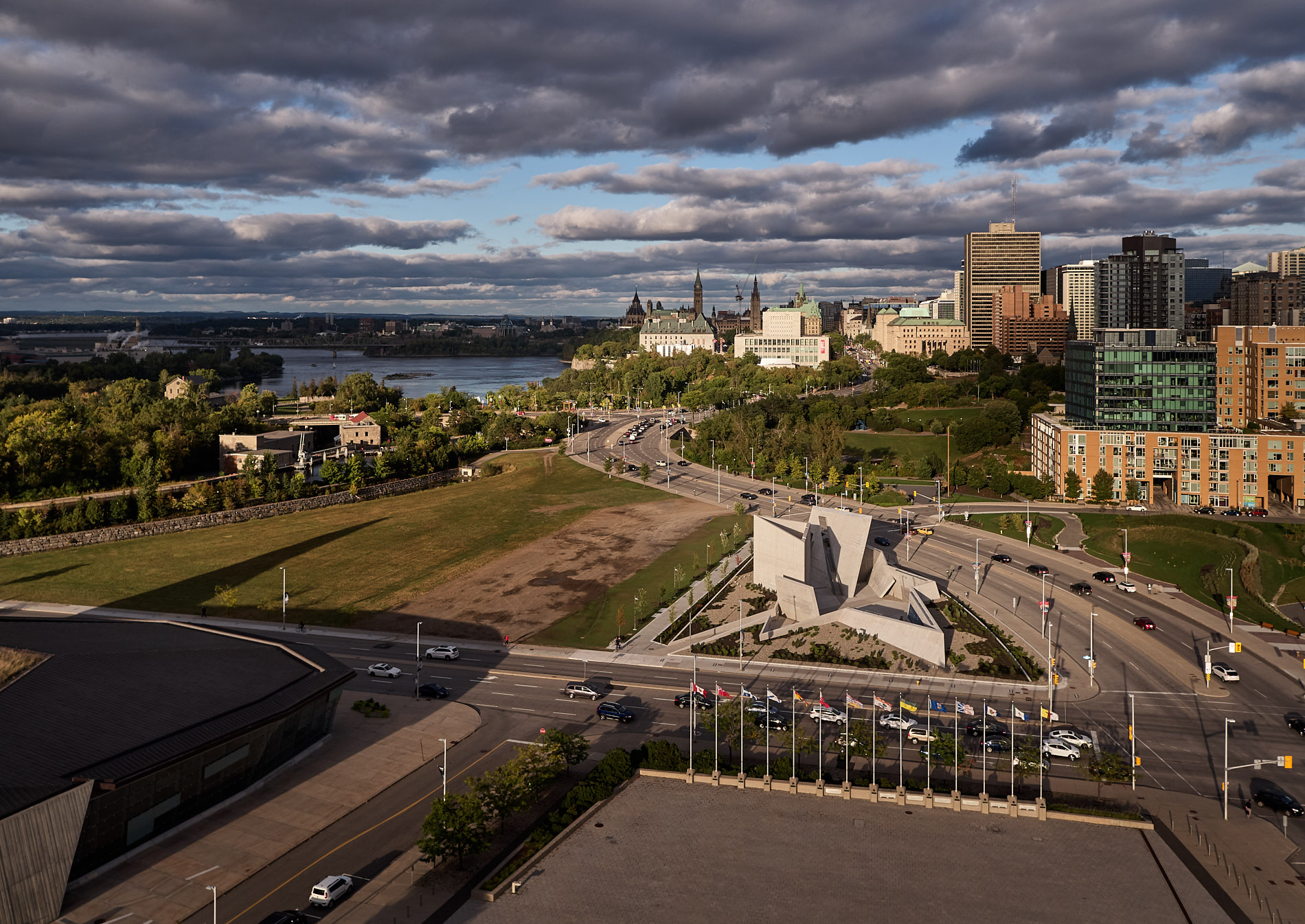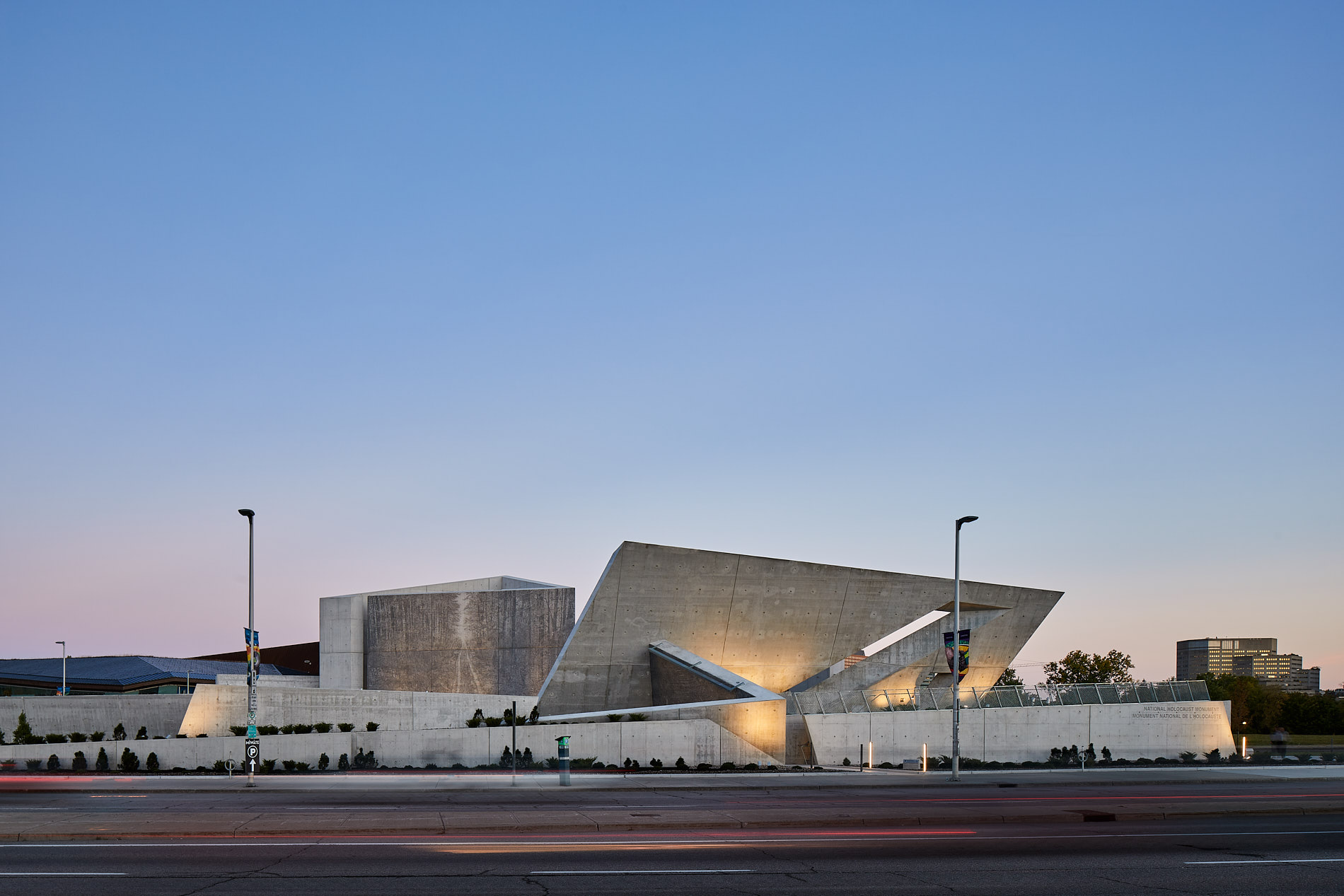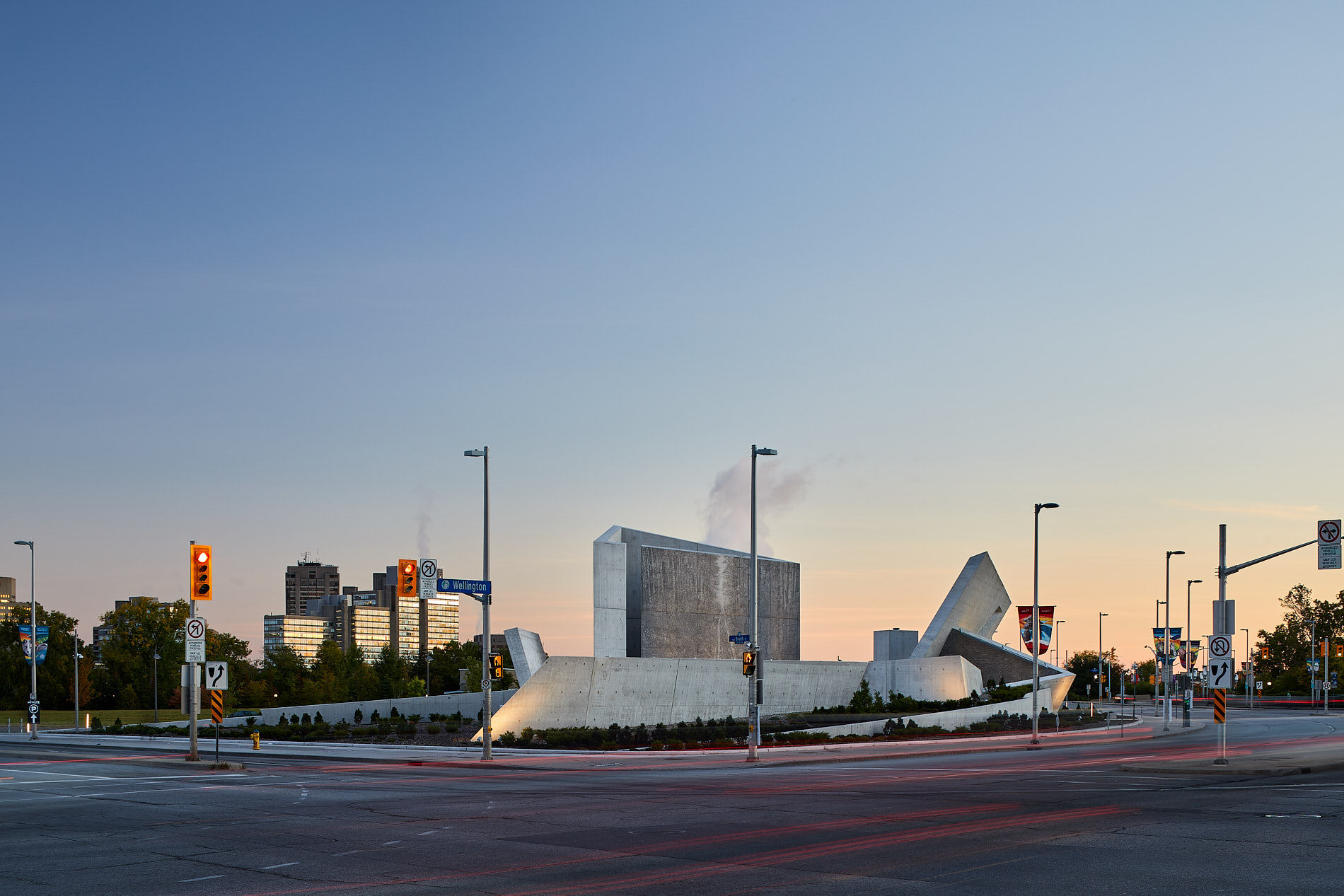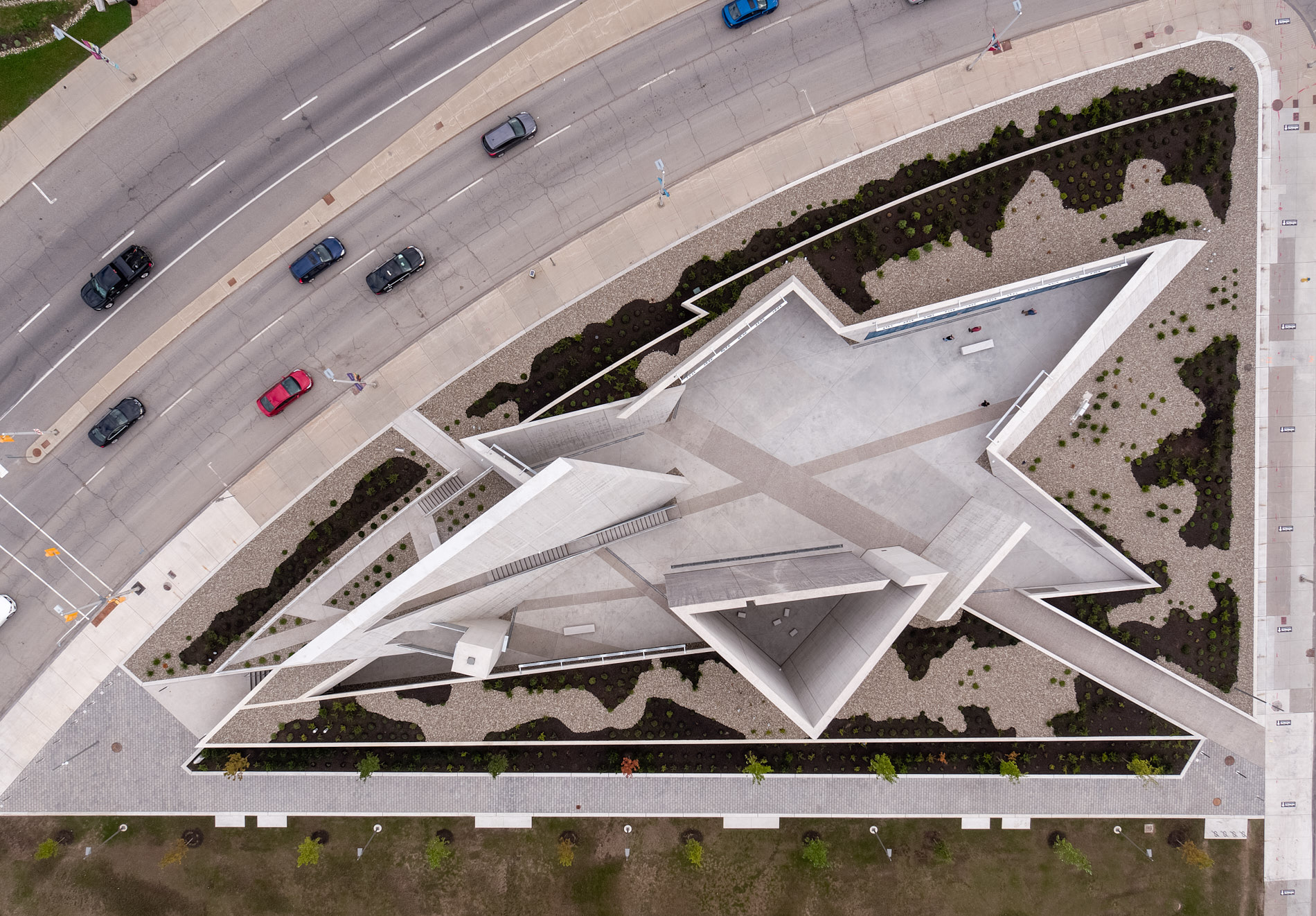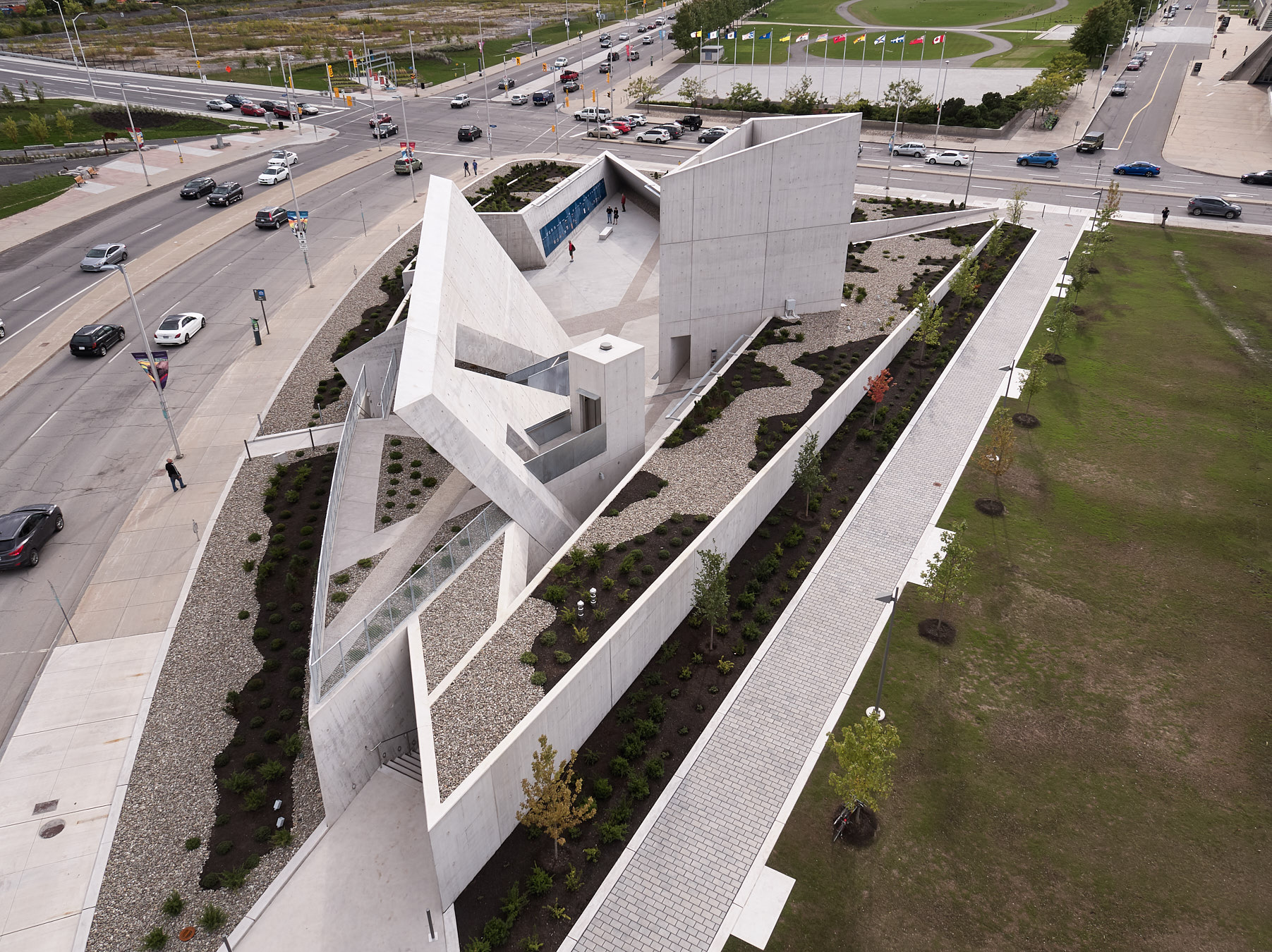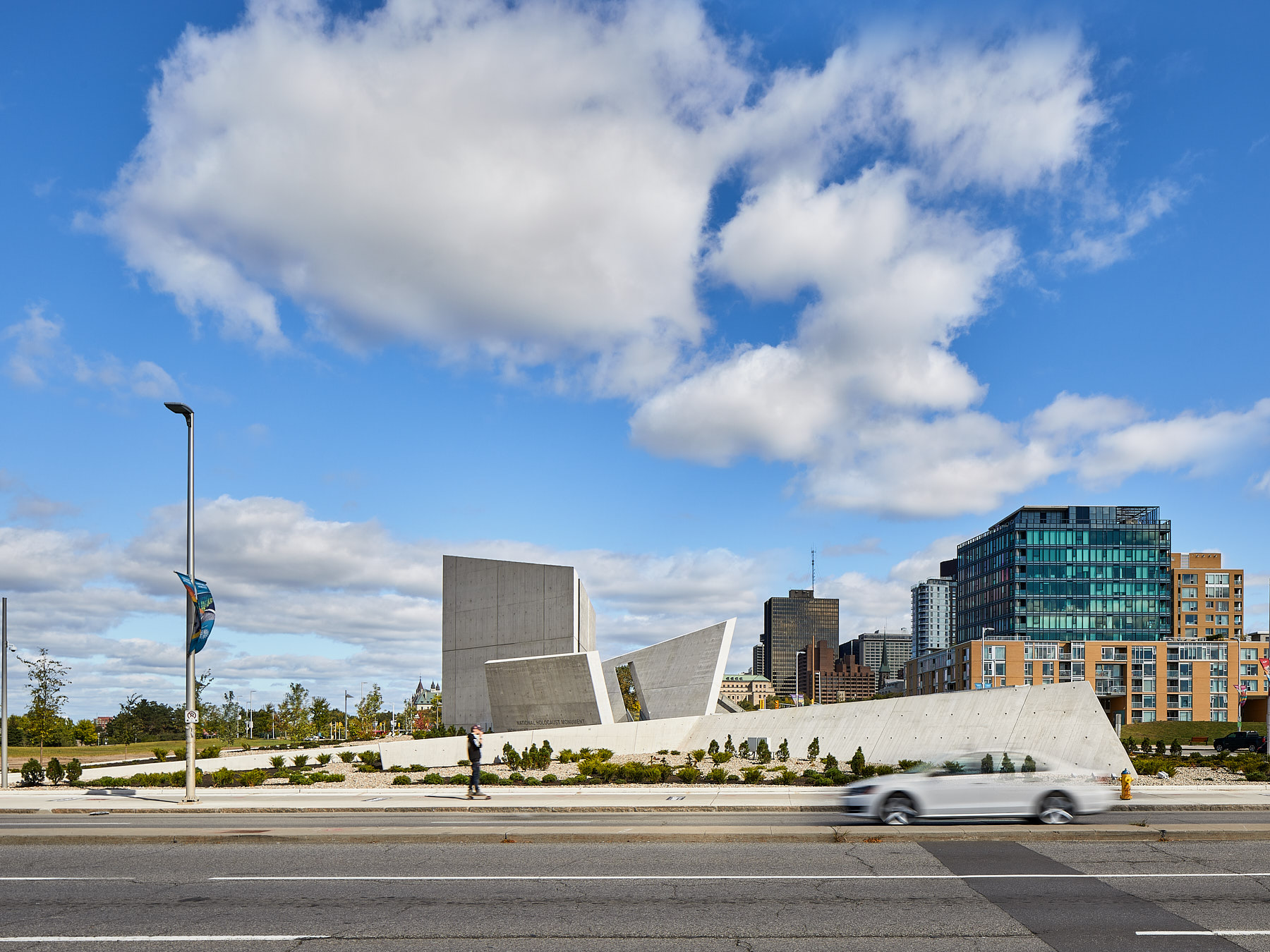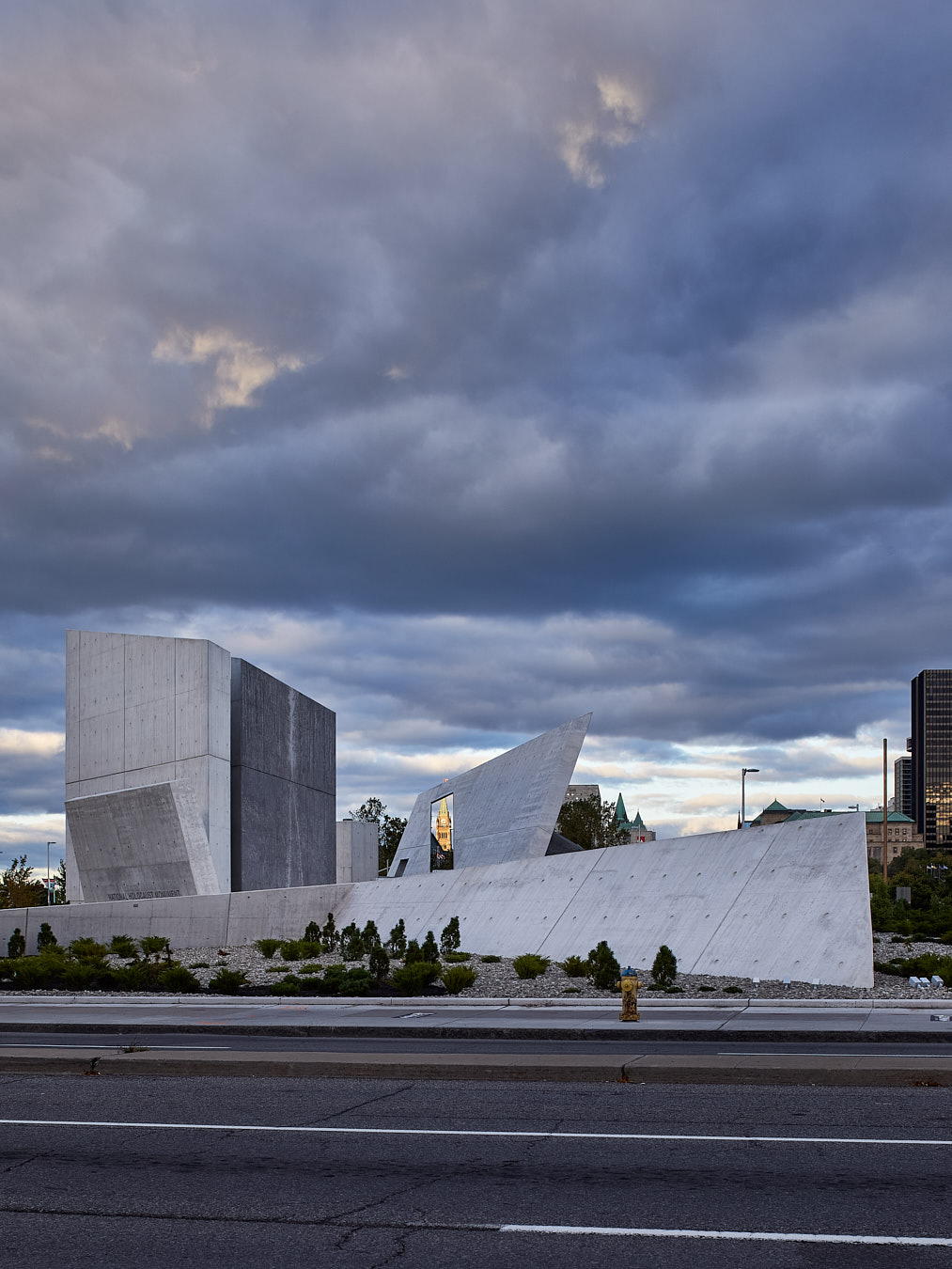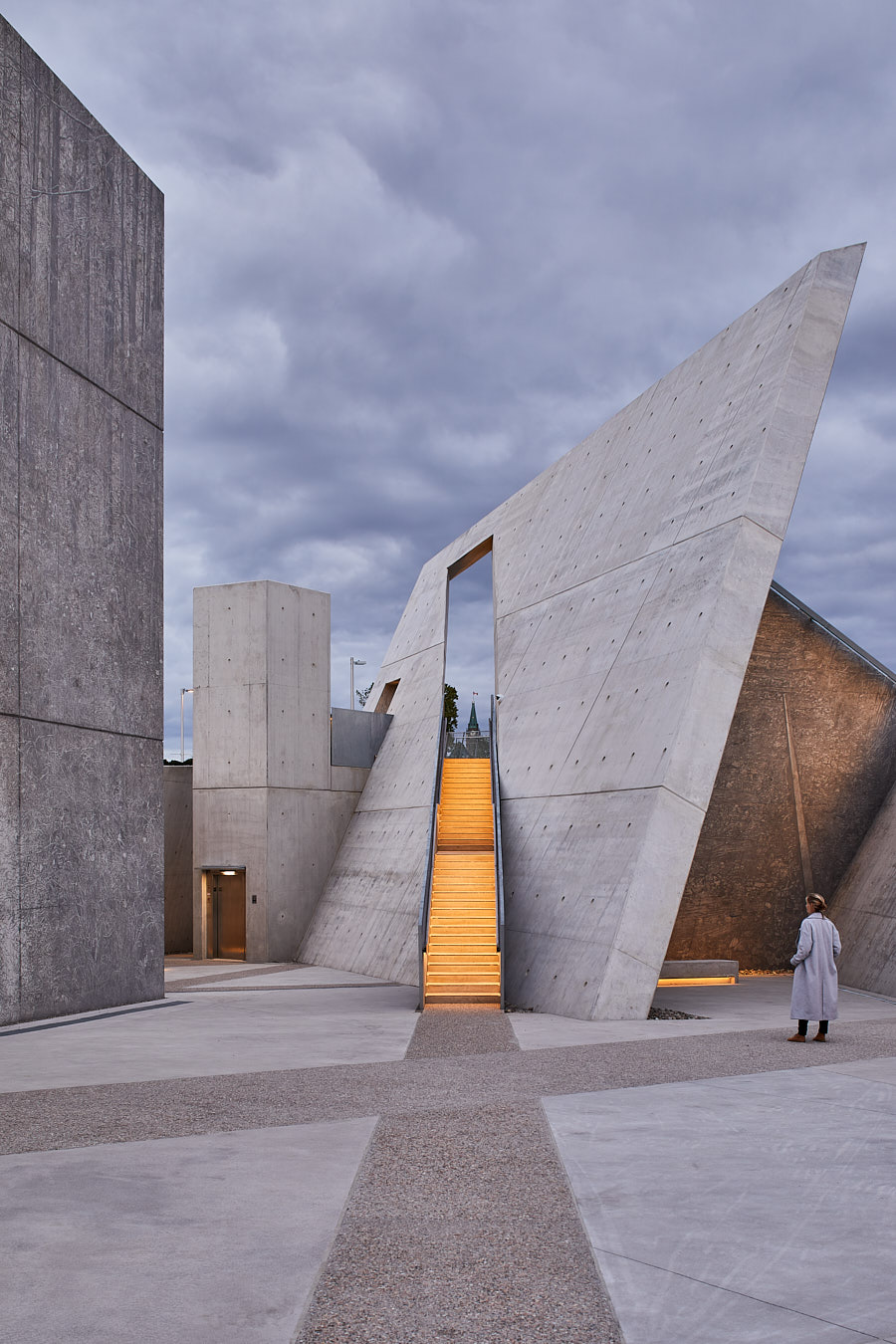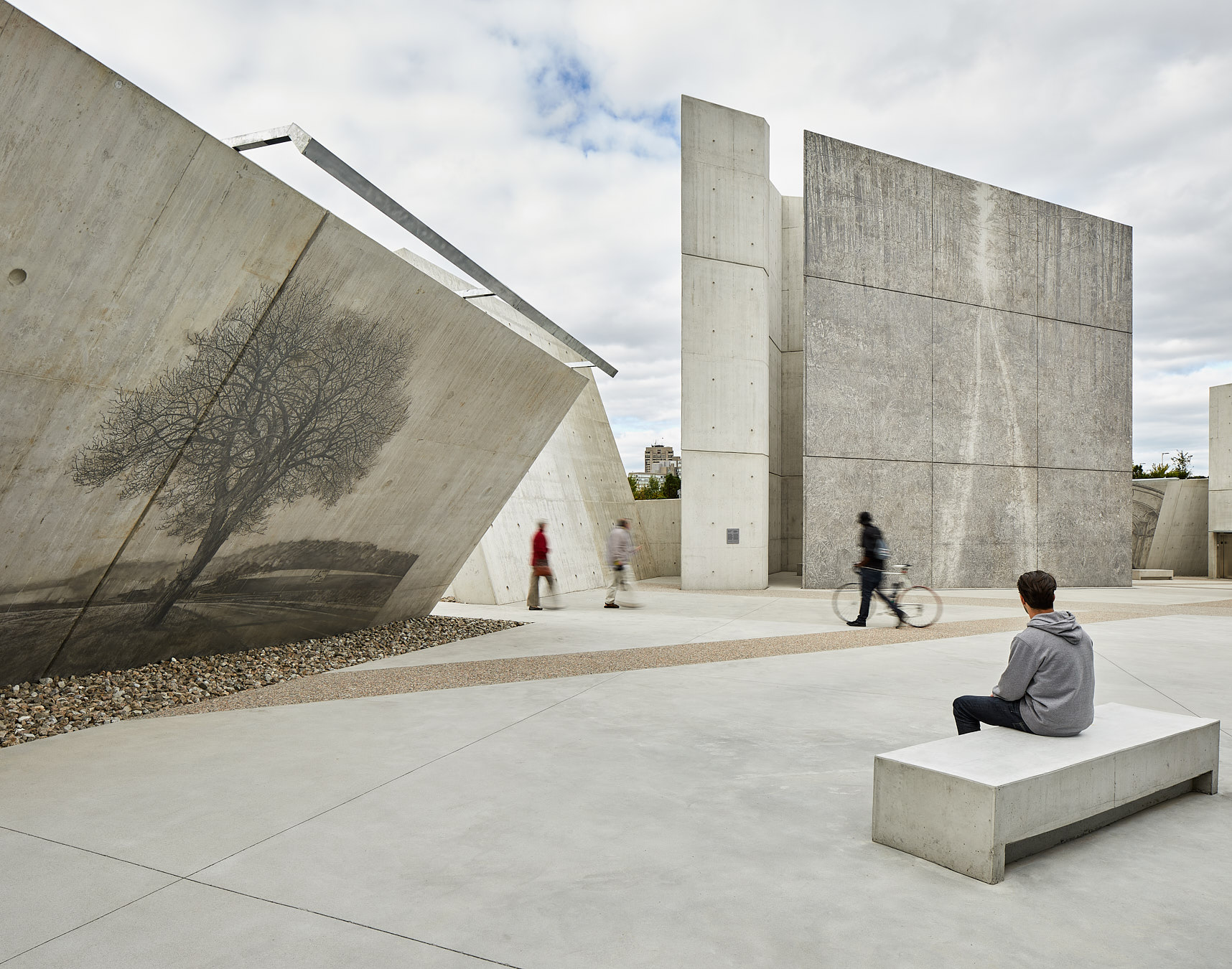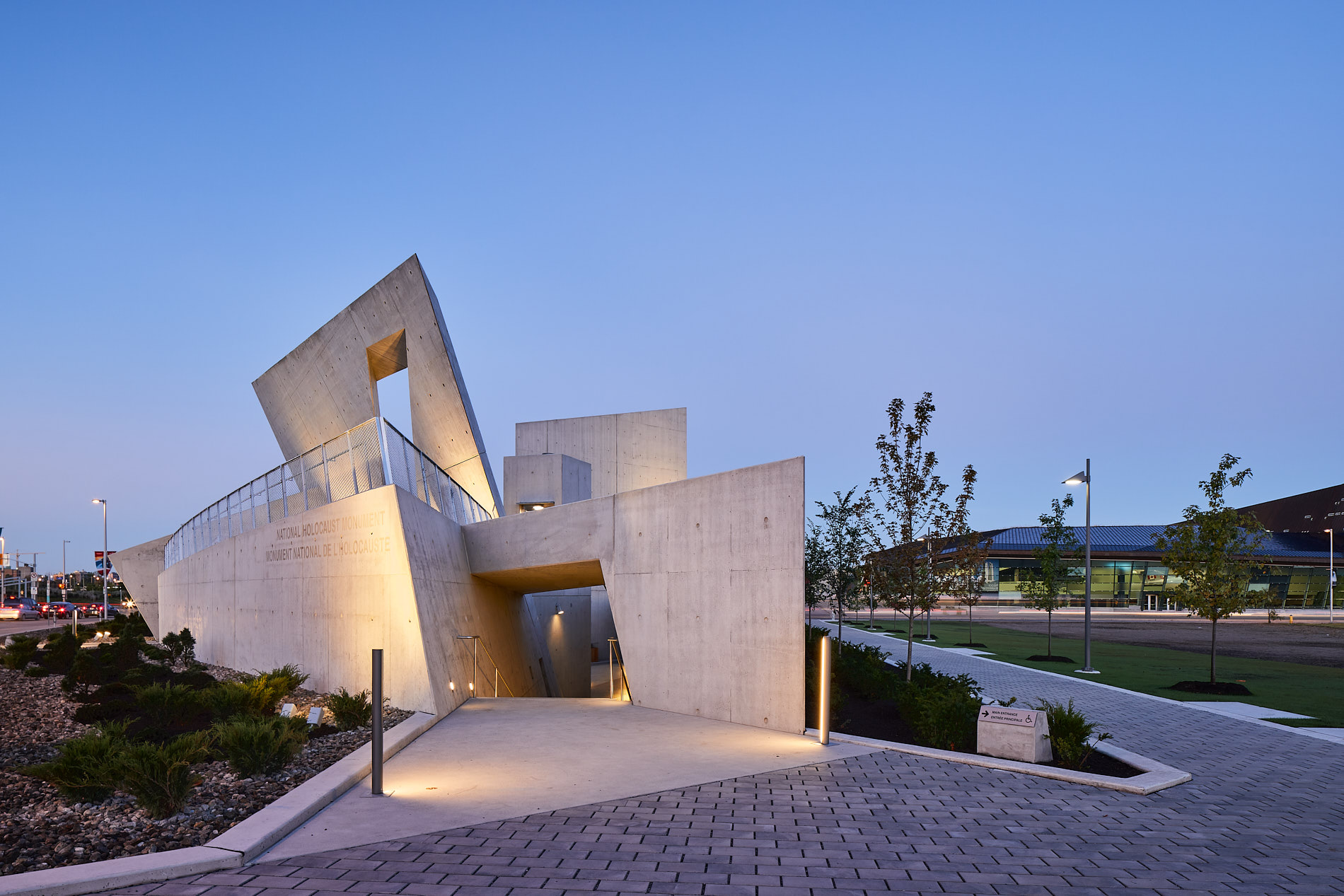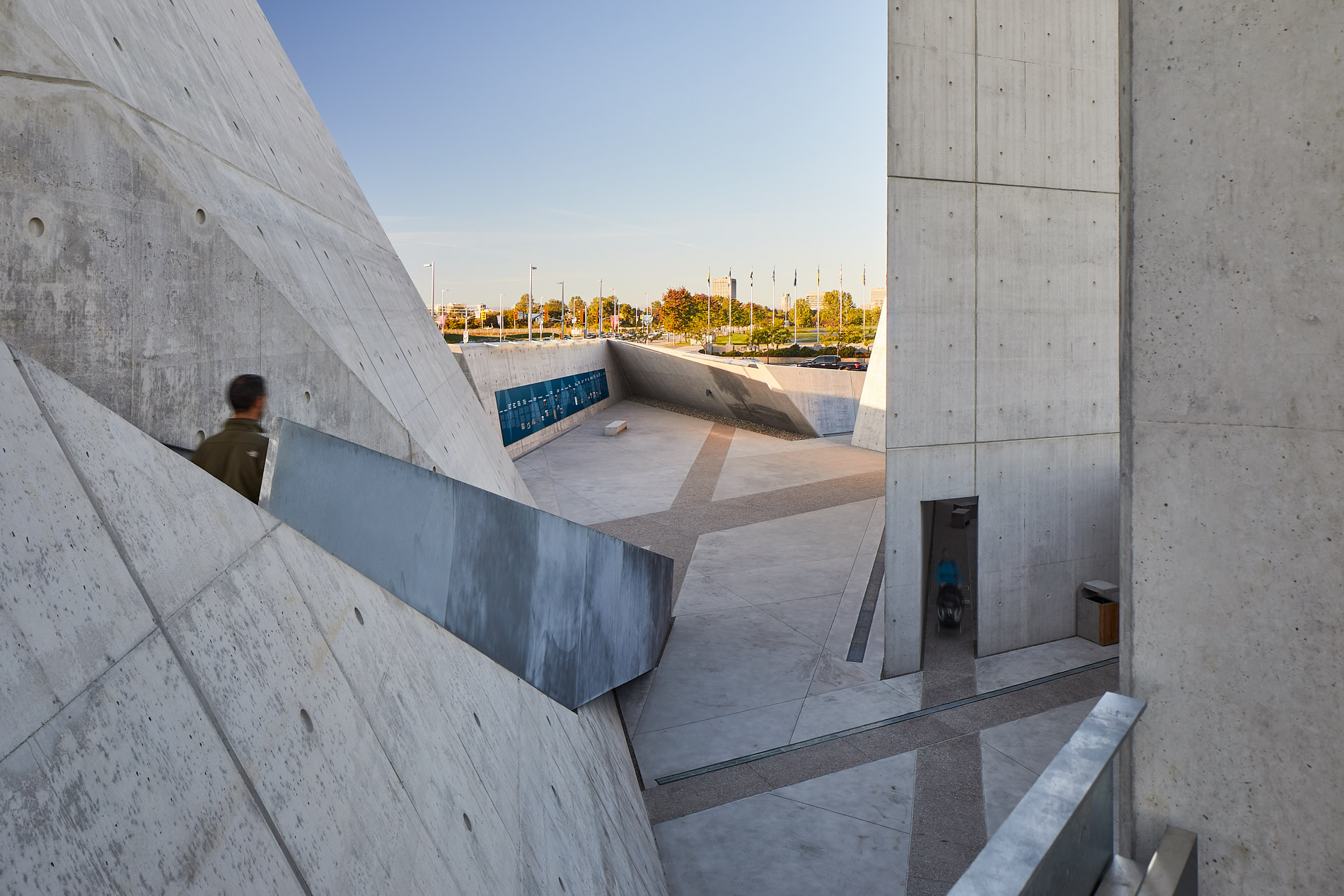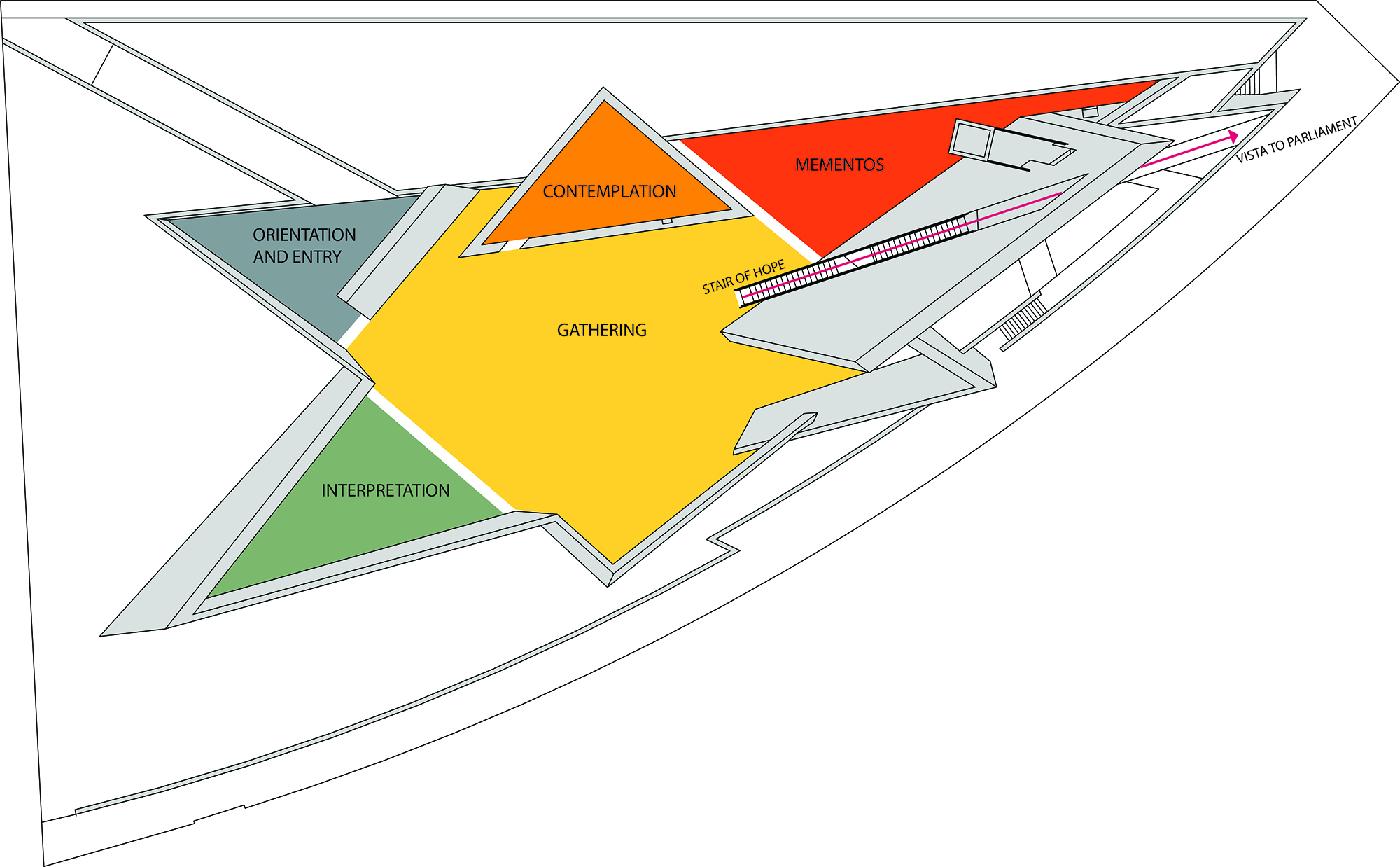Star of Commemoration: Holocaust Memorial in Ottawa

Foto: Doublespace
Canada now has its own official memorial to the horrors of the Holocaust – prominently located opposite the Canadian War Museum, not far from the Parliament Buildings. The concept was developed by Daniel Libeskind and his office with an interdisciplinary team including, among others, landscape architects Claude Cornier and Associates, historian Doris Bergen and photographer Edward Burtynsky.
In his own field, Burtynsky is as celebrated as Libeskind. Apart from the architect, he has surely left the most visible traces on the memorial. Six of his images of Holocaust scenes have been embedded into the exposed-concrete surfaces, revealing the theme of the new construction.
The monument works on more than the visual level. As with all Libeskind’s architecture, the intellectual and abstract play their parts as well. The plan of the memorial is shaped like a deformed Star of David – the symbol used by the National Socialists to identify their Jewish victims. Triangles were worn by the Sinti and Roma, as well as those imprisoned for religious or political reasons.
The triangular and rectangular spaces inside the star, some of which are open to the sky, serve various purposes, such as contemplation or providing information about Canadian Holocaust victims. A narrow “ladder to heaven” leads from the central courtyard to a raised platform with a view to the east, overlooking the Parliament Buildings. The Sky Void, a 14-metre high exposed-concrete space that opens to the sky, will leave a lasting impression on visitors. If it had a roof, they could almost feel that they had been transported to the Holocaust Tower of the Jewish Museum in Berlin.
Libeskind has taken another design element from the museum in Berlin: the floor of the memorial is slightly sloped. Symbolically, the slope leads either down into the past or up into the future. “That communicates to the body, not just to the mind," Libeskind told the Canadian newspaper The Globe and Mail. "You don't see it visually, but you feel it. Too many monuments are made for the brain. But to feel – to emotionally be in dialogue with the weight of the concrete and to understand what those crushing forces might mean … it's designed for each person to have their own experience."
In his own field, Burtynsky is as celebrated as Libeskind. Apart from the architect, he has surely left the most visible traces on the memorial. Six of his images of Holocaust scenes have been embedded into the exposed-concrete surfaces, revealing the theme of the new construction.
The monument works on more than the visual level. As with all Libeskind’s architecture, the intellectual and abstract play their parts as well. The plan of the memorial is shaped like a deformed Star of David – the symbol used by the National Socialists to identify their Jewish victims. Triangles were worn by the Sinti and Roma, as well as those imprisoned for religious or political reasons.
The triangular and rectangular spaces inside the star, some of which are open to the sky, serve various purposes, such as contemplation or providing information about Canadian Holocaust victims. A narrow “ladder to heaven” leads from the central courtyard to a raised platform with a view to the east, overlooking the Parliament Buildings. The Sky Void, a 14-metre high exposed-concrete space that opens to the sky, will leave a lasting impression on visitors. If it had a roof, they could almost feel that they had been transported to the Holocaust Tower of the Jewish Museum in Berlin.
Libeskind has taken another design element from the museum in Berlin: the floor of the memorial is slightly sloped. Symbolically, the slope leads either down into the past or up into the future. “That communicates to the body, not just to the mind," Libeskind told the Canadian newspaper The Globe and Mail. "You don't see it visually, but you feel it. Too many monuments are made for the brain. But to feel – to emotionally be in dialogue with the weight of the concrete and to understand what those crushing forces might mean … it's designed for each person to have their own experience."
DL_NHM Statement from DETAIL online on Vimeo.
Further information:
Team:
Lord Cultural Resources
Studio Daniel Libeskind
Claude Cormier + Associés
Edward Burtynsky
Doris Bergen
Focus Lighting
Team:
Lord Cultural Resources
Studio Daniel Libeskind
Claude Cormier + Associés
Edward Burtynsky
Doris Bergen
Focus Lighting

